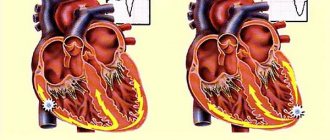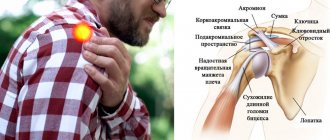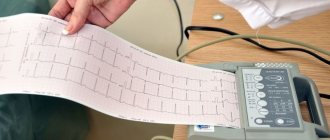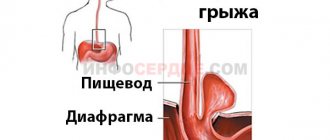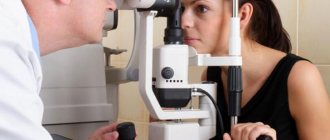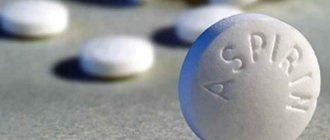What conditions can cause pain?
The chest area contains internal organs such as the lungs, trachea, pleura, heart, esophagus and diaphragm. The disease of any of them can cause pain in a person. The most common conditions that cause pain when breathing are:
- heart pathologies;
- injuries accompanied by rib fractures;
- disease of the pectoral cartilage - costochondritis;
- damage to intercostal muscle fibers;
- inflammatory process of the pleura;
- pneumothorax;
- osteochondrosis;
- intercostal neuralgia;
- shingles;
- bronchitis or pneumonia.
Each disease has its own symptoms, one of which may be pain in the heart when inhaling.
Diseases characterized by pain in the heart area
As a rule, pain in the heart area when inhaling occurs if the human body is susceptible to certain types of diseases. For example, this manifests itself in those who suffer from thoracoalgia and precordial syndrome.
Pain in the heart area when inhaling
Along with this, painful sensations can also occur in those who suffer from herpetic or intercostal neuralgia. It is also worth noting that people with reduced immunity (herpetic neuralgia) are prone to frequent pain in the chest area.
Precordial syndrome is a disease that is diagnosed as acute pain in the sternum. This feeling occurs quite suddenly. However, it also passes suddenly (after 1-3 minutes). If the pain does not subside, then it will certainly become dull.
Fortunately, official medicine has proven that these sensations are in no way related to cardiac dysfunction. It is, rather, the result of human activity. That is why doctors conclude that the heart hurts from nerves and, therefore, there is no need to raise the alarm. But the symptoms of precordial syndrome can easily be confused with the symptoms of another disease, which will pose a very significant threat.
Pneumothorax is a disease that manifests itself in the form of a formed cushion located near the lungs. This disease can occur for many reasons, such as: due to the physiological characteristics of the body, due to past illnesses, etc.
As a rule, the pain of pneumothorax cannot be tolerated. That is why it is advisable and necessary to immediately seek help from a doctor. In addition, you may even need surgical intervention (it all depends on the type of disease).
Pain in the heart area when inhaling
Heart reasons
If a person’s heart hurts when inhaling, this alarming symptom cannot be ignored. In this case, the pain can be stabbing, pressing, burning in nature, which often indicates the presence of such pathologies:
- rheumatism;
- myocardial inflammation;
- functional disorders of the cardiovascular system;
- weakening of the tone of the heart muscle during anemia.
Important! It is impossible to make a diagnosis on your own, since each of the diseases has its own causes and characteristic clinical signs, which should be considered exclusively by a doctor.
Rheumatism
Rheumatism is a disease accompanied by inflammation of the connective tissues of the body, which affects the heart, blood vessels and musculoskeletal system. Among the signs of pathology are:
- joint pain;
- pain in the heart when inhaling and at rest;
- fatigue;
- formation of rheumatoid nodes;
- rashes on the skin of a pale pink color - annular rash.
Rheumatic myocardial damage is a common consequence of infectious diseases
Rheumatism occurs against the background of damage to the body by a bacterial infection or due to the development of an allergic reaction. Treatment is carried out with the help of antibacterial agents, hormonal drugs and immunomodulators. If left untreated, the disease becomes chronic, causing heart failure and many other complications.
Myocarditis
One of the symptoms of inflammatory myocardial damage is pain in the heart area during deep inspiration, walking, physical activity, and even at rest. A patient with myocarditis is concerned about the following manifestations:
- fast fatiguability;
- excessive sweating;
- shortness of breath, headache;
- attacks of increased or, conversely, slowed heart rate.
The pathology is toxic, allergic or infectious in nature. Treatment is carried out by getting rid of the underlying disease that provoked myocardial damage.
Functional disorders of the cardiovascular system
Dysfunction of the heart and blood vessels or inconsistency of their activities in medical practice is called a functional disorder of the cardiovascular system. The condition occurs as a result of disruption of the sympathetic or parasympathetic division of the human autonomic nervous system. This occurs against a background of stress and excessive emotional stress. More often, the pathology occurs in children, adolescents and women.
Symptoms of the disease include:
- pain in the heart when inhaling and moving;
- headache;
- dizziness;
- sweating;
- emotional instability;
- chronic fatigue;
- sleep disturbance.
Dysfunction of the heart and blood vessels causes many unpleasant symptoms in humans
Therapy of the disease is carried out by improving the psychological and physiological state of the patient, which often requires the participation of a therapist, psychologist, neurologist, cardiologist and other specialists.
Heart dysfunction due to anemia
Anemia or anemia is a pathology accompanied by a violation of the qualitative composition of the blood, which often causes serious biological changes in myocardial tissue. In turn, a deficiency of certain substances entails oxygen starvation of the heart and other internal organs, which causes chest pain, apathy, irritability, loss of strength, dizziness and many other negative manifestations.
Pain in the heart when taking a deep breath, causes
Every second person wonders why my heart hurts when I inhale? The appearance of this symptom is influenced by several factors that are worth paying attention to. Among them is pneumothorax. When taking a deep breath, the heart hurts if the patient develops pneumothorax. This is a diagnosis in which a large amount of air penetrates into the pleural cavity. Often, upon diagnosis, a patient develops a complication, even with effective treatment.
The disease is caused to develop in two cases:
- Traumatic pneumothorax. Air enters the lungs during a fall, injury, or injury.
- Damage to lung tissue. The lungs begin to function incorrectly, which is what causes pneumothorax.
The pain of pneumothorax is cutting and pulling. It gets worse when laughing, when inhaling and when talking. Associated symptoms include depression, fear, arrhythmia, changes in blood pressure, cough, general weakness, and pallor. If neglected and untreated, it leads to tuberculosis, lung tumors and other complications.
Most often occurs in males in adulthood. Pneumothorax also appears when flying to high altitudes, when diving to depths and serious injuries.
- Intercostal neuralgia. Intercostal neuralgia occurs when pinched nerves are irritated and can also cause severe pain in the heart. The nature of the pain is sharp and pulling. The patient feels unpleasant sensations constantly, they intensify. The pain is localized in the heart and ribs. Stops when taking painkillers or changing position. Intensifies with breathing, coughing and sneezing. Sometimes accompanied by sharp tingling and burning in the ribs. With intercostal neuralgia, there are no cardiac symptoms other than pain in the heart. Blood pressure and pulse are within normal limits. This disease is not dangerous if treated on time. More often observed in mature people. Medication treatment using injections and droppers is attributed.
- Precordial syndrome. With precordial symptoms, heart pain is the main symptom. The nature of the pain syndromes is acute and sharp. Lasts for two minutes and stops. After this, the patient is again disturbed. When breathing, the discomfort intensifies. Sometimes the aching pain lasts for several hours and only stops when taking painkillers. Precordial syndrome most often appears at the age of twenty. It is not life-threatening during treatment and with timely assistance. Treatment in a hospital is necessary to monitor the patient’s condition and monitor dynamics. In untreated cases, the patient is prescribed drug treatment at home with bed rest.
- Dry pleurisy. We are talking about inflammation of the pleura. It also causes pain syndromes in the heart area. Pleurisy appears when ribs are broken, bruises and other injuries. Unpleasant sensations appear when inhaling, when changing posture and when moving. Does not pose a danger to human life. The causes of pleurisy include pneumonia, benign and malignant tumors, bronchial asthma, abscess, heart attack and other diseases. Tuberculosis can also be a concomitant diagnosis.
Non-cardiac pathologies
In addition to diseases of the heart and blood vessels, pain in the chest when inhaling can occur due to other pathological conditions. These are problems with the respiratory system, esophagus, thoracic spine and some other diseases. Let's take a closer look at them.
Osteochondrosis
Osteochondrosis is a disease that occurs mainly in patients after 35–40 years of age, accompanied by displacement and dissection of intervertebral discs, pinching of nerve fibers in this area. The risk group for the disease includes people who lead a sedentary lifestyle or, conversely, regularly perform heavy physical work, as well as patients whose medical history is burdened by a genetic predisposition to the disease. In addition, osteochondrosis is caused by injuries, infectious diseases and some other reasons.
Signs of pathology:
- pain in the sternum when inhaling, very similar to heart pain;
- feeling of stiffness;
- neuralgic disorders - numbness of the limbs, spots before the eyes, blurred vision and hearing, tinnitus.
Important! Pain when inhaling in the region of the heart is most often caused by osteochondrosis of the thoracic spine.
Osteochondrosis of the thoracic spine is a common cause of pain in the sternum
Rib fracture
In the area of the sternum there are paired ribs. Injuries in this area can cause a rib fracture, which is characterized by the following symptoms in the patient:
- acute stabbing pain in the heart area when inhaling (fracture on the left side);
- the patient takes a forced position of the body;
- shallow breathing with intermittent breaths;
- chest deformation;
- a characteristic crunch due to bone friction (with multiple fractures).
The most dangerous is considered to be a fracture that damages internal organs (heart, lungs, aorta). The condition requires immediate medical intervention, as in some situations a person can lose his life in a matter of minutes.
Costochondritis
A pathological condition caused by inflammation of the cartilage connecting the ribs and sternum is costochondritis. Another name for the disease is costosternal syndrome. The disease develops due to damage to the cartilage by infection, as well as as a result of strong physical effort or injury. Clinical manifestations include:
- pain in the left side of the sternum, which intensifies when inhaling or coughing;
- shortness of breath;
- incomplete inspiration;
- general deterioration of health;
- weakness, apathy.
Treatment is carried out with the help of non-steroidal anti-inflammatory drugs, analgesics, and physical therapy.
Rupture or strain of intercostal muscles
A sprain or complete tear of the intercostal muscle occurs due to injuries in this area. When the fibers break, a person hears a characteristic click and feels a sharp pain. Stretching is accompanied by less obvious signs. The patient may experience discomfort and pain when inhaling air. If muscle damage occurs on the left, many patients confuse these sensations with pain in the heart. The clinical picture is complemented by the following signs:
- muscle deformation;
- formation of edema and hematoma;
- an increase in local temperature.
Rupture of muscle fibers causes severe pain
If the pain is moderate, indicating a minor sprain, apply a cold compress to the injured area for 10–15 minutes. If a muscle ruptures, you must go to the hospital.
Important! It can be quite difficult to independently understand the extent of muscle damage, so it is better to consult a specialist.
Inflammation of the pleura
The thin serous membrane that lines the space between the lungs and the chest is called the pleura. When this area is damaged by viral, bacterial, parasitic infections or fungal microorganisms, an inflammatory process of the pleura develops. In addition, the disease can be caused by reasons not related to the spread of infection. These include myocardial infarction, vascular diseases, tumors, sternum injuries and more.
Symptoms of the disease:
- pain when inhaling;
- dry cough;
- increased body temperature;
- weakness;
- swelling of the face and neck.
Treatment of the disease depends on the primary disease that provoked pleurisy. Medicines include corticosteroids, antibacterial drugs, non-steroidal anti-inflammatory drugs, and diuretics. During treatment, the patient needs a correct daily routine and nutrition.
Intercostal neuralgia
Stitching, aching, pressing pain, which is periodic or constant, often indicates the development of compression or irritation of the nerve fibers located in the ribs. Neuralgia occurs, as a rule, with osteochondrosis, ankylosing spondylitis, intervertebral hernias, sternum injuries and other conditions.
Intercostal neuralgia has a very similar course to many other diseases
The patient's clinical picture is accompanied by pain in the sternum during inhalation, turning, and physical activity. Discomfort during palpation increases. Often the symptoms of intercostal neuralgia are confused with heart pathologies, pleurisy, hepatic colic, tumors and other conditions.
Pneumothorax
Pneumothorax is the process of excessive accumulation of air between the pleural sheets, which entails dysfunction of the respiratory and cardiovascular systems. Pathology occurs due to mechanical damage to the pleura or against the background of diseases of organs located in the chest area. Mechanical pneumothorax often occurs due to severe coughing, sternum trauma, and physical exertion.
Characteristic signs of the disease:
- acute pain at the beginning of the attack;
- discomfort when inhaling;
- forced position of the patient's body;
- shortness of breath, difficulty breathing.
Medical assistance for this condition should be immediate. Treatment is carried out in a hospital setting by evacuating excess air surgically.
Bronchitis
Disease of the bronchi of a diffuse inflammatory nature, provoked by various factors, is called bronchitis. There is a chronic or acute form of the disease. Among the signs accompanying this condition are:
- severe cough, nasal congestion;
- pain when inhaling and exhaling, very often reminiscent of pain in the heart;
- increased body temperature;
- sputum separation;
- weakness;
- increased sweating.
Pain when inhaling into the heart often occurs with bronchitis
There are acute and chronic forms of bronchitis. The causes of the pathology lie in infectious and toxic damage to the bronchi. Most often, the disease occurs against the background of influenza, acute respiratory infections and ARVI, as well as among patients whose work activity is associated with regular damage to the bronchi by harmful chemicals.
Pneumonia
Pneumonia or pneumonia is a lesion of the lung tissue that occurs more often when the respiratory organs are damaged by a viral, bacterial or fungal infection. Most often, pneumonia occurs due to the influence of streptococci, staphylococci, chlamydia and other pathogens.
Characteristic manifestations:
- pain when trying to breathe air;
- severe dry cough;
- sweating;
- dyspnea;
- increase in body temperature to 39–40 degrees;
- weakness, loss of appetite;
- less likely to faint.
Treatment of the disease is carried out in a hospital setting under the close supervision of medical personnel. Lack of timely treatment often ends in death.
Which doctor should I contact if I have pain?
Due to the fact that pain in the heart area when inhaling can be caused by a wide variety of diseases, in no case should you self-medicate and let the disease take its course. If you notice pain in yourself or your loved ones, you should definitely make an appointment with a therapist. The doctor will conduct a preliminary diagnosis and refer you for further treatment to the necessary specialist - a cardiologist, neurologist, infectious disease specialist, pulmonologist. Whatever the cause of chest discomfort, timely diagnosis and proper treatment are a necessary condition for maintaining health and preventing undesirable consequences.
